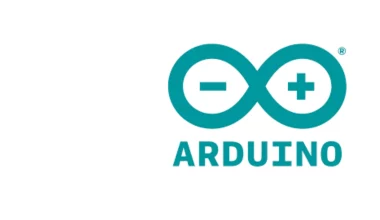Microsoft, a well-known brand in the computer sector, has made a crucial choice about its authentication procedures that indicates a major change in how it approaches security. The IT giant intends to replace NTLM (NT LAN Manager) with Kerberos, a decision that has generated debate and thought throughout the IT community. Stronger authentication and improved security measures are expected outcomes of this change, which is in line with the rising demand for reliable defense against contemporary cyberthreats.
Introduction to NTLM and Kerberos
With their respective features and functions, NTLM and Kerberos have long been important actors in the field of network authentication protocols. Microsoft’s NTLM protocol has been widely used, particularly in previous iterations of the Windows operating system. But as technology advances and security threats grow more complex, NTLM’s shortcomings have grown more apparent, underscoring the need for a more reliable and secure substitute.
The Limitations of NTLM in Authentication
For many years, NTLM was a dependable authentication system, but in the face of sophisticated cyberattacks, it has demonstrated weaknesses. The vulnerability of this system to many types of assaults, such as brute-force and pass-the-hash attacks, has alarmed security experts and companies who depend on it for network security. Consequently, critical data’s security and integrity have been compromised, necessitating the need for a more robust solution.
Understanding the Advantages of Kerberos
On the other hand, Kerberos has become well-known for its emphasis on security and capacity to offer a more secure environment for authentication. Kerberos, which is based on a trusted third-party authentication mechanism, reduces the risks of unauthorized access and data breaches by providing encryption and mutual authentication to secure communication over untrusted networks. Because of its strong security features, it’s a great option for businesses looking to better guard against contemporary security risks.
Microsoft’s Decision to Phase Out NTLM
Microsoft has made a major move by giving Kerberos priority as the main authentication protocol, recognizing the shortcomings of NTLM and the increasing need for enhanced security measures. Microsoft wants to strengthen its security framework and give users access to Kerberos’ sophisticated security capabilities by gradually phased out NTLM. Microsoft’s dedication to provide the greatest levels of security and data protection for its consumers is demonstrated by this calculated move.
Implications for Security and Authentication
There are several ramifications for security and authentication across multiple domains when switching from NTLM to Kerberos. By utilizing Kerberos’s strong encryption and mutual authentication features, companies may strengthen their security protocols and create a safe environment that protects sensitive information from outside threats. With this change, network security has advanced significantly and a more secure and robust authentication environment is now possible.
Transition Challenges and Considerations
Although switching to Kerberos has many advantages, there are several issues and concerns that organizations must address with the process. To guarantee a smooth transfer without interfering with vital activities, the migration process needs meticulous preparation and execution. To ensure a seamless and effective switch from NTLM to Kerberos, considerations like resource allocation, user training, and compatibility with existing systems must be made.
Steps for Implementing Kerberos Effectively
In order to guarantee a seamless transition and successful deployment of Kerberos, enterprises had to follow a methodical strategy that includes thorough planning, testing, and deployment tactics. Organisations may effectively manage the intricacies involved in the migration process by adhering to a well established plan, which guarantees little interruption and optimal security during the shift.

Industry Reactions to Microsoft’s Decision
Industry responses to Microsoft’s plan to gradually replace NTLM with Kerberos have been mixed. Some people welcome the move as a major step towards strengthening security measures, while others voice worries about the difficulties and complications involved in the changeover. Proactive steps and thorough coaching are essential, according to industry experts and specialists, to help organisations make the shift efficiently.
Expert Recommendations for a Smooth Transition
A number of recommendations have been made by cybersecurity experts and industry experts to help ensure a smooth transfer process in light of the transition’s complexity. These suggestions include security principles, best practices, and extensive training programs designed to give organisations the tools and information they need to successfully use Kerberos while minimizing risks and difficulties.
Benefits of Strengthened Authentication for Businesses
Businesses may reap several advantages by adopting Kerberos and retiring NTLM, such as better authentication procedures, increased data security, and fortified defense against sophisticated cyberattacks. With the help of Kerberos’ robust authentication framework, enterprises can create robust security architectures that promote dependability, trust, and data integrity while protecting sensitive data from breaches and illegal access.
Potential Impact on Legacy Systems and Applications
The shift from NTLM to Kerberos might provide difficulties for applications and legacy systems that mostly depend on the older authentication mechanism. For enterprises, ensuring compatibility and integration with legacy systems becomes essential. To avoid interruptions and guarantee smooth operation across all platforms, careful planning and strategic execution are needed.
Addressing Concerns Regarding Compatibility and Integration
When integrating Kerberos into current systems, compatibility and integration needs must be thoroughly assessed. Concerns about legacy applications and infrastructure must be addressed by organisations in order to guarantee a seamless transition that maintains functionality and operational continuity. Ensuring a smooth integration process that reduces interruptions and maximizes productivity requires strong testing and validation protocols.
Key Features and Enhancements of Kerberos
Kerberos is a safe and dependable authentication technology because of its many important features and improvements. Strong encryption, single sign-on capabilities, and mutual authentication support allow enterprises to create a smooth and safe authentication framework that improves overall security posture and simplifies access control. The addition of these functionalities solidifies Kerberos’s standing as the go-to authentication protocol for contemporary businesses looking for all-encompassing security solutions.
Real-world Examples of Successful Migrations
Numerous establishments have effectively maneuvered through the shift from NTLM to Kerberos, demonstrating the effectiveness and advantages of putting in place a strong authentication framework. In order to guarantee a seamless and successful transition process, real-world examples of successful migrations emphasize the need of careful preparation, strategic execution, and extensive training programs. For companies setting out on a similar path towards improved security and stronger authentication, these success stories are invaluable resources.
Conclusion: Emphasizing the Importance of Secure Authentication
To sum up, Microsoft’s choice to gradually replace NTLM with Kerberos represents a significant change in the field of network security and authentication. Microsoft reiterates its commitment to bolstering security measures and shielding customers from ever-evolving cyber dangers by giving priority to better authentication processes. Despite some difficulties along the way, the switch from NTLM to Kerberos creates opportunities for a more robust and secure authentication environment, enabling enterprises to build strong security frameworks that protect confidential information and guarantee secure communication across many networks.








1 comment
Very well presented. Every quote was awesome and thanks for sharing the content. Keep sharing and keep motivating others.